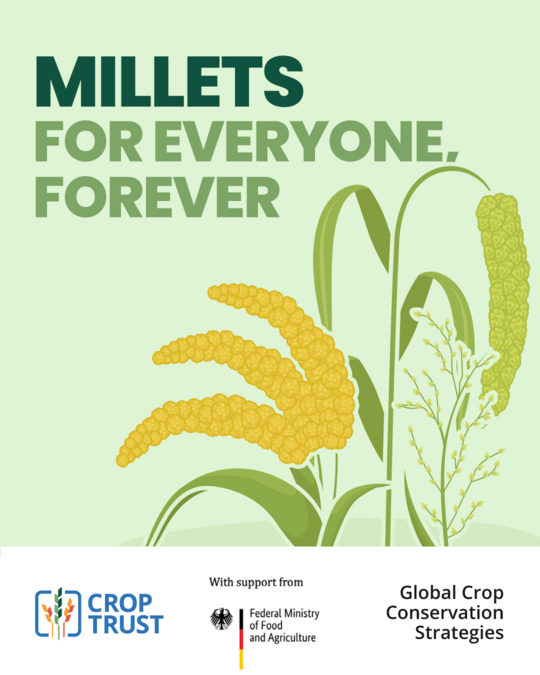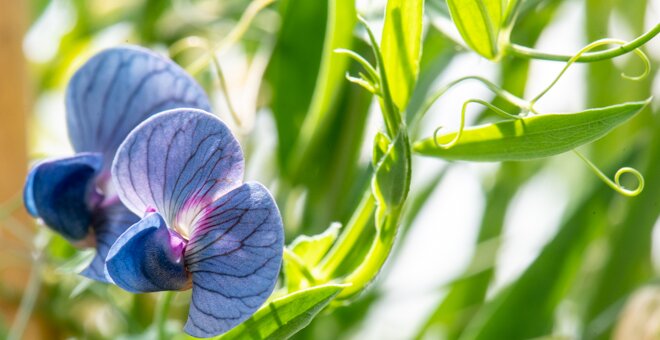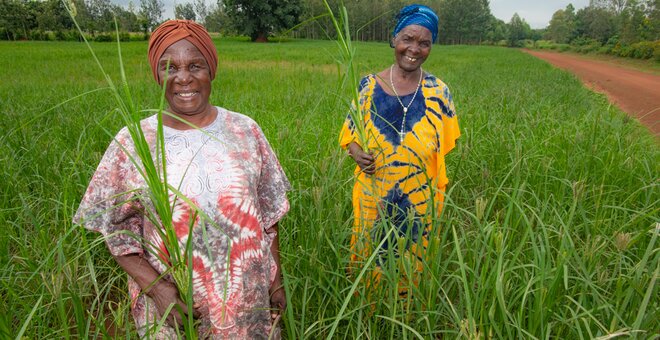The Crop Trust, along with its strategic partners, is developing conservation strategies to protect the genetic diversity of the world’s food crops. This initiative is funded by the German Federal Ministry of Food and Agriculture (BMEL).
The little grains with a big future
Global millet production
- We grow millets in many parts of the world, especially in India, Africa and Asia.
- Pearl millet is the main global millet crop, followed by foxtail, finger, and proso millets.
- Barnyard millet is an important crop in India, China, Korea and Japan.
- Little and kodo millets are locally important in India.
- Teff is the most important food grain in Ethiopia.
- Fonio is grown across West Africa.
Why we need more millets on our skillets
- Millets are hardy! They grow in poor soils and areas where it is difficult to grow other crops.
- Millets are resistant to pests and diseases and extremely drought and heat tolerant.
- As the climate continues to change, these resilient crops will be important for feeding the global population.
Why millets are disappearing from our diets
- They’re less productive than other grain crops.
- They are labor-intensive to grow and process.
- They have limited markets.
- It’s been difficult for farmers and breeders to develop new, higher-yielding varieties because of the lack of public and private breeding programs and constraints in distributing and accessing seeds
- …all this means farmers are growing them less and less and many millet varieties are disappearing fast.
Millets are delicious and nutritious – but they need our help
The millet family is under threat. That’s why we developed a global conservation strategy to keep two major millets (pearl millet and finger millet) and seven minor millets (fonio, teff, and barnyard, proso, foxtail, little and kodo millets) on our plates.
These are the three steps to more millet:
1. Create a global database with information on all the millet diversity around the world for plant breeders and farmers. This will make it easier to develop new, better millet varieties.
2. Establish a global fund so genebanks have the money to upgrade and support their millet collections. This will ensure that existing collections are fully documented, searchable, efficient, secure and backed up. Collections that are running well will be able to produce enough seeds to share.
3. Launch a global initiative to conserve the diversity of millet crops in farmers’ fields and in natural areas. Farmers’ fields are rich with millet varieties – we should make sure these varieties are also kept safe in genebanks.
Did you know?
- Millets are among the oldest foods we eat — proso and foxtail millets were some of the first domesticated grains.
- We’ve cultivated proso millet for more than 10,000 years!
- Millets are part of the Poaceae or grass family.
- They’re high in fiber, protein and complex carbohydrates and also contain calcium, magnesium, potassium, phytonutrients and antioxidants. Plus, they’re gluten free!
- We cook millet as a grain like rice, made into porridge, added whole to seeded breads, ground into flour to make products such as flatbreads, or fermented to make beer and other alcoholic beverages.
- Millet grain is also used as feed for birds and livestock.
Related stories about millets
Pre-Breeding Work With Grasspea and Finger Millet Gets a Boost
Two food crops prized for their nutritional value and ability to survive temperature extremes, drought and poor soil are now receiving the attention they deserve. A new project led by the Crop Trust will help improve the...
2 Oct 2019
2 Oct 2019



